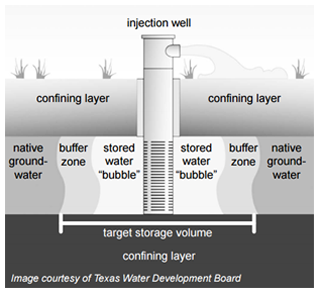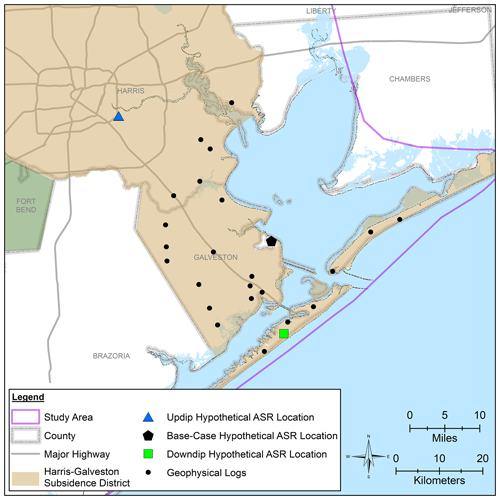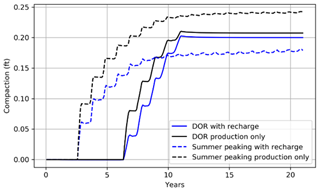Assessment of subsidence risk associated with aquifer storage and recovery in the Coastal Lowlands Aquifer System, Houston, Texas, USA
In the Houston, Texas region, groundwater use is regulated by the Harris-Galveston Subsidence District (District) because of historical regional subsidence from groundwater development. The District regulates groundwater production in the Coastal Lowlands Aquifer System (CLAS) to mitigate subsidence through the implementation of District Groundwater Regulatory Plan. The District has successfully reduced groundwater pumping as a percent of demand regionally while controlling subsidence through the implementation of alternative water supplies. Aquifer Storage and Recovery (ASR) is an alternative water supply strategy that provides a means to store water underground and increase water supply more cost effectively than traditional storage expansion strategies. Groundwater users in the District are interested in the many potential benefits of ASR as a water supply strategy. Little is known about the potential effects on compaction and land surface subsidence resulting from ASR operations. Recognizing this, the District funded research on the potential subsidence risk associated with ASR. Two hypothetical, though representative, ASR projects were developed and analysed: (1) an industrial ASR project meant to provide water supply during a drought of record (DOR), and (2) a municipal ASR project designed to provide an annual municipal summer peaking water supply. Simulations of groundwater hydraulics and subsidence were performed at three potential locations within the CLAS to provide insight into variability associated with location and aquifer depth. Theoretical simulations confirmed the potential for subsidence associated with the application of ASR in the CLAS, although operating an ASR for summer peaking needs has less potential risk of subsidence than the DOR scenario in the scenarios simulated. The study simulations provide insight into how an ASR project may be designed and operated to minimize compaction and potential subsidence. Based on this study, ASR operated to address summer peaking showed the greatest potential to reduce additional compaction verses sourcing all water from groundwater. This theoretical study provides a basis for future research on subsidence associated with ASR and provides a framework for consideration for the regulation of ASR within the District.








